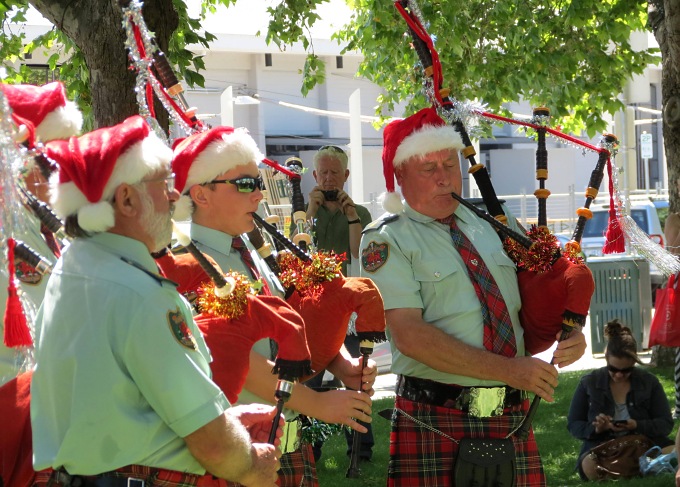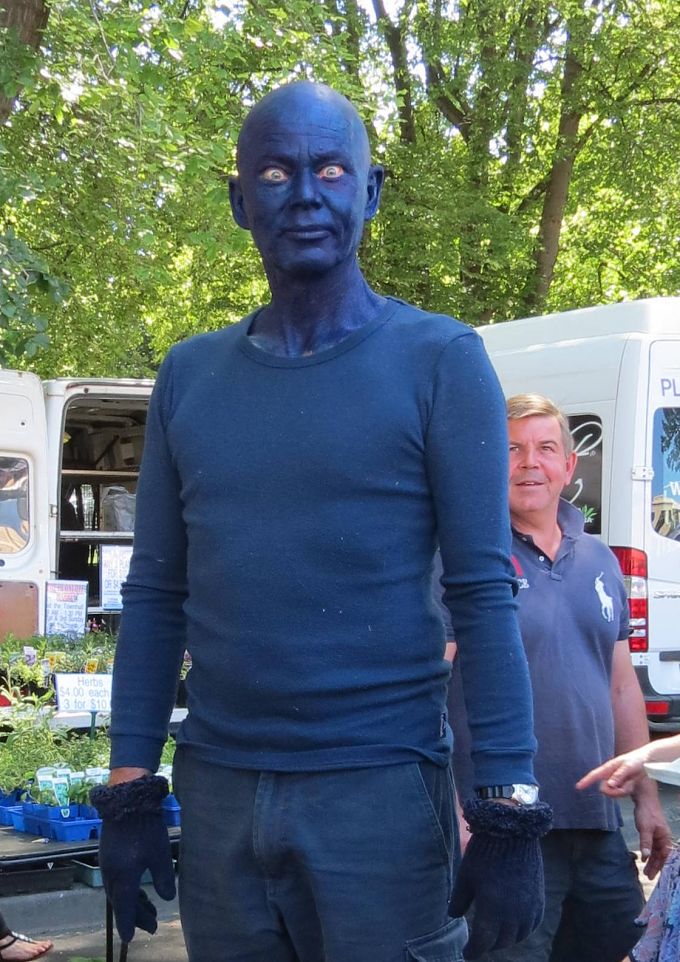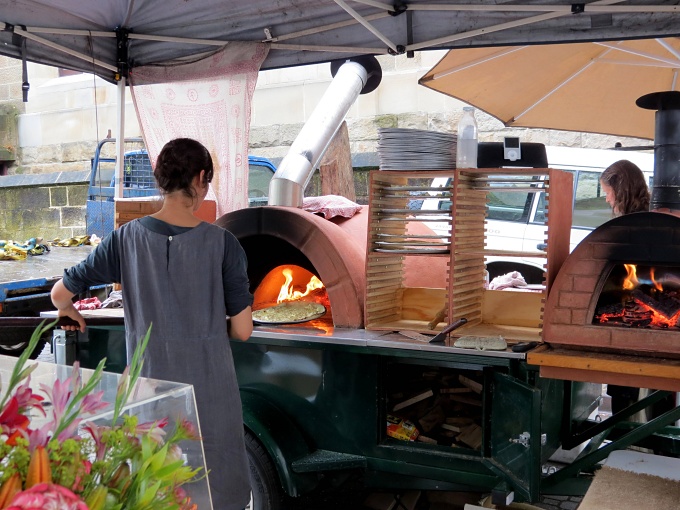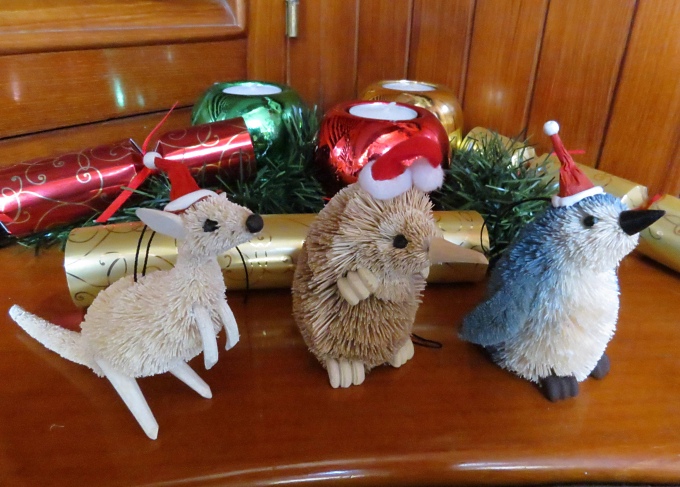Salamanca Market
/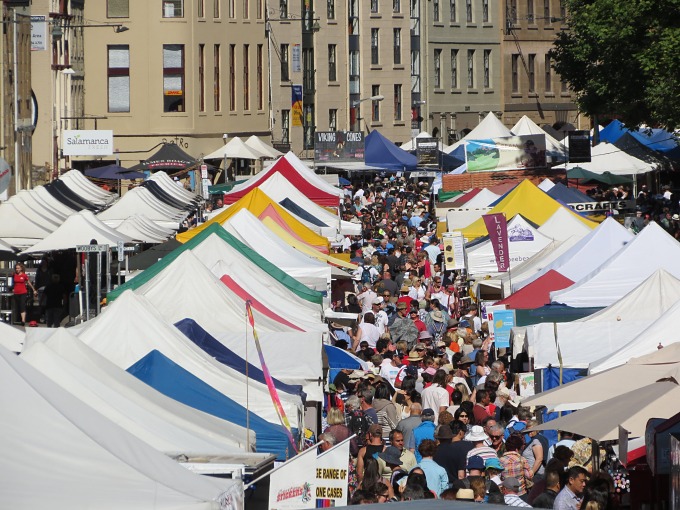 For over 40 years, the Salamanca Market has operated every Saturday morning* rain or shine. We walked along Salamanca Place and through Salamanca Square last week on our self-guided historical walking tour of Hobart. There were people having lunch at sidewalk cafes and a few browsed in the many boutiques along the avenue. We strolled along, hand in hand. It was nothing like the throngs we saw on a sunny Saturday morning. The whole place was transformed. Add 300 vendor stalls, close off the street, then entice thousands of people to come and you're bound to see a difference.
For over 40 years, the Salamanca Market has operated every Saturday morning* rain or shine. We walked along Salamanca Place and through Salamanca Square last week on our self-guided historical walking tour of Hobart. There were people having lunch at sidewalk cafes and a few browsed in the many boutiques along the avenue. We strolled along, hand in hand. It was nothing like the throngs we saw on a sunny Saturday morning. The whole place was transformed. Add 300 vendor stalls, close off the street, then entice thousands of people to come and you're bound to see a difference.
Like many American seaports that have seen gentrification over the years (Portland and Baltimore come to mind immediately), for more than a century, Hobart's waterfront was a rough, tough place where whalers and sailors ruled. Huge Georgian-style sandstone warehouses line the streets now known as Salamanca Place. A change came about in the 1960's. At first, it was a cheap rent district for artists. Then the “market” happened in 1972 and rents gradually crept up and abandoned warehouses became retail space and restaurants. Today, it's trendy and touristy and mobbed.
Charles and Camilla were here in Hobart a month ago. How could we have missed them? They, too, visited the Salamanca Market. They also visited the Antarctic Division (so did we) and historic Richmond (so did we) and a Sorrell sheep stud farm (no...we did NOT do this). We've pretty much adhered to their itinerary though we've done it with a lot less hoopla and it's taken us months instead of a day. Of course, they had wheels...and a driver.
The market street, Salamanca Place, is described as “plane-tree lined”. What the heck is a plane tree? Judging from the leaves and a little research, we'd call it a sycamore tree in the US. Big, huge shade trees that really did their job in the brilliant morning Tassie sun. We fought our way up one lane and down another the whole length of the avenue … no casual strolling today.
There were buskers. We like buskers. A blue man statue caught my eye. He winked at me. I threw him a few coins. There was a bagpipe ensemble playing Christmas carols. A one-man band serenaded us for awhile. Santa had come to town and was set up under a small marquis (tent), listening intently to his little supplicants, making his list, checking it twice, all the while sweating in his Santa suit in a Tassie heatwave.
And then the 300 vendor stalls. Oh, my, that's a lot of vendors. There were food booths selling everything from wood-fired pizza complete with pizza oven on site to Turkish coffee to fairy floss to sizzling sausage. There were produce and flower stalls. A green grocer shouted out prices for his fresh corn, raspberries and Tasmanian cherries. There were some chintzy souvenirs and t-shirts at triple the price we'd seen for them in Sydney. Mostly though, there was a diverse mix of wares and though we bought little, we enjoyed looking. Antiques, used books, Tasmanian lavender products, Akubra hats, handmade jewelry, pottery, Tasmanian woolen socks, native plants, carved native woods, Tasmanian honey... you name it, it was there.
We enjoyed it enough to return this week on a rainy Saturday morning. We wore our foul weather gear and trekked down the foreshore walk to the market place, splashing through the puddles. All the vendors were set up. People huddled beneath umbrellas to keep dry. There were definitely not as many people around … our kind of shopping day.
So, what did we buy? A loaf of putanesaca bread, a large punnet of fresh Tassie strawberries and most importantly, some tiny buri palm Australian animals to use as Christmas decorations. Distinctive, different and a fond memento from our holiday season in Hobart.
*A note: when Christmas or Anzac Day fall on a Saturday, the market is held the following Sunday.



